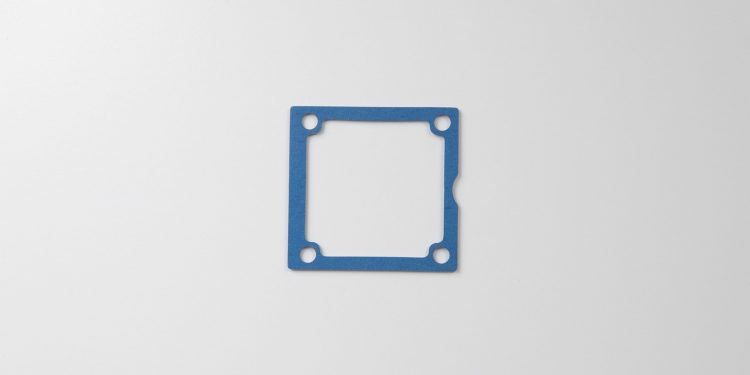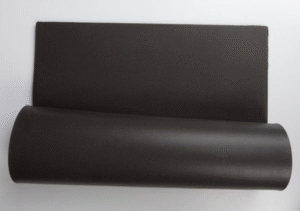SSP can make you a conductive seal from the EMI/RFI silicones that we manufacture.
A conductive seal is a type of gasket or sealing material designed to allow electrical conductivity while maintaining an environmental or mechanical seal. These seals are particularly useful in enclosures or interfaces where grounding and shielding against EMI/RFI are necessary.
Conductive seals typically consist of elastomeric materials embedded with conductive particles or metallic mesh structures. The conductive fillers within the elastomer provide the necessary electrical path, ensuring that electrical signals or grounding requirements are met.
Basic Principles
Conductive seals operate based on the following principles:
Electrical Conductivity: The presence of conductive fillers ensures that the seal can transmit electrical signals or provide a grounding path.
EMI/RFI Shielding: By creating a continuous conductive barrier, these seals prevent unwanted electromagnetic waves from interfering with sensitive electronics.
Environmental Protection: Conductive seals also serve as traditional gaskets, preventing dust, moisture, and other contaminants from entering an enclosure.
Compression & Contact Integrity: The seal must maintain firm contact with mating surfaces to ensure both electrical and mechanical effectiveness.
Conductive Seal Materials
The materials used in conductive seals determine their performance, conductivity, and durability. Common materials include:
Elastomers
Silicone: Provides flexibility, temperature resistance, and durability.
Fluorosilicone: Offers chemical resistance, making it suitable for harsh environments.
EPDM (Ethylene Propylene Diene Monomer): Provides weather and ozone resistance.
Conductive Fillers
Silver: Offers high conductivity and superior EMI shielding, but is expensive.
Nickel: Provides good corrosion resistance and moderate conductivity.
Copper: Offers good electrical conductivity at a lower cost than silver.
Carbon or Graphite: Used in lower-cost applications with moderate conductivity requirements.
Aluminum: Lightweight and commonly used in aerospace applications.
Metallic Structures
Some conductive seals incorporate metallic wire mesh or expanded metal within elastomers to enhance conductivity and shielding performance.
Types of Conductive Seals
Conductive seals come in various forms, depending on their applications and construction methods:
Conductive Elastomer Gaskets: Made from elastomers filled with conductive particles, these gaskets provide flexibility and effective EMI shielding.
Wire Mesh Gaskets: Consist of woven metal wire, offering high conductivity and EMI protection.
Knitted Mesh Seals: Created from interwoven conductive wire, typically used in high-performance shielding applications.
Metal-Foam Seals: Combine metallic foams with elastomers to provide both structural support and electrical conductivity.
O-Rings and Custom Seals: Conductive O-rings are designed for circular sealing applications, ensuring both conductivity and environmental protection.
Applications
Conductive seals are used in various engineering applications that require EMI shielding and environmental sealing:
Aerospace and Defense: Used in avionics, radar systems, and secure communication devices.
Telecommunications: Essential in shielding RF-sensitive equipment, such as cell towers and satellite systems.
Medical Devices: Required for shielding sensitive medical electronics from external electromagnetic interference.
Automotive Industry: Used in electric vehicles (EVs) to prevent electromagnetic interference in control modules.
Industrial Equipment: Protects control panels, sensors, and other critical electronic systems from EMI and environmental exposure.
Key Design Considerations for Engineers
Engineers must consider several factors when selecting and designing conductive seals for an application:
Conductivity Requirements
Determine the level of electrical conductivity required for effective grounding or shielding.
Select the appropriate filler material (e.g., silver for high conductivity, nickel for moderate conductivity).
EMI Shielding Effectiveness
Evaluate the frequency range of interference to ensure the chosen material provides adequate shielding.
Consider the compression and surface contact area of the seal for consistent performance.
Environmental Factors
Consider exposure to moisture, chemicals, temperature extremes, and UV radiation.
Select a material with the necessary durability (e.g., fluorosilicone for chemical resistance).
Compression and Mechanical Integrity
Ensure the seal maintains proper compression over time to prevent degradation.
Consider the force required to maintain effective contact without over-stressing components.
Cost and Manufacturing Feasibility
Balance performance with cost constraints to select an optimal solution.
Evaluate the manufacturability of custom shapes and sizes for specific applications.
Testing and Validation
Engineers should test conductive seals to ensure they meet performance standards. Common tests include:
Electrical Conductivity Testing: Measures resistance and continuity to verify electrical performance.
Shielding Effectiveness Testing: Assesses how well the seal prevents EMI/RFI.
Environmental Testing: Includes temperature cycling, chemical exposure, and moisture resistance tests.
Compression Set Testing: Evaluates how well the material maintains its sealing and conductive properties under mechanical stress.





